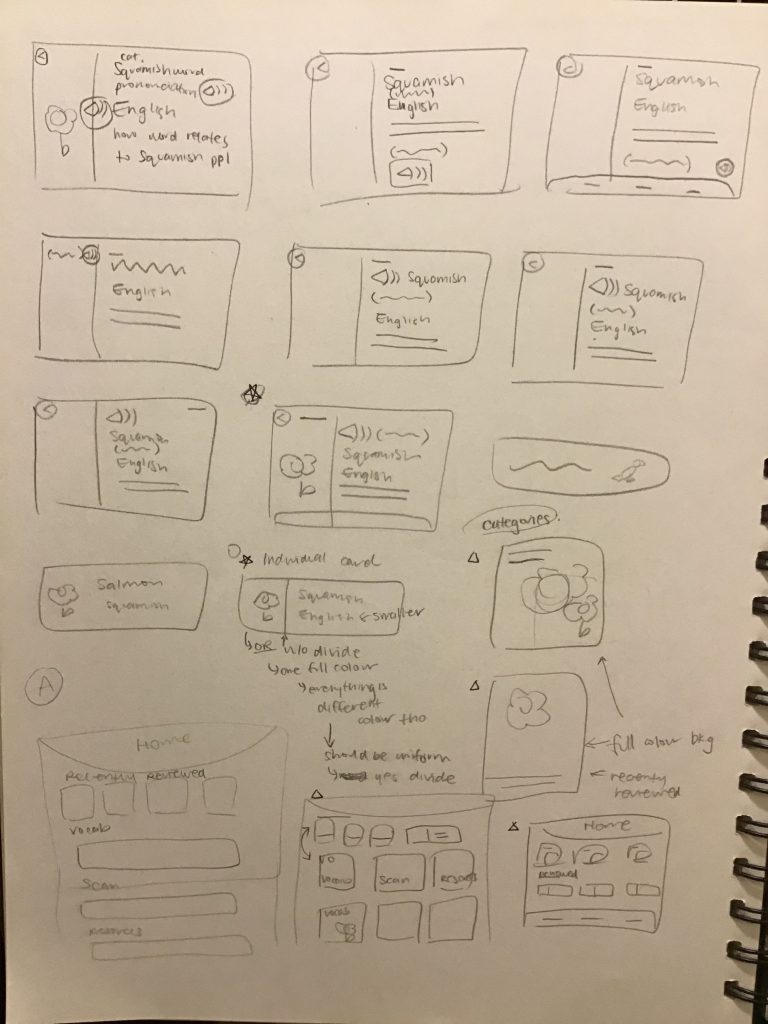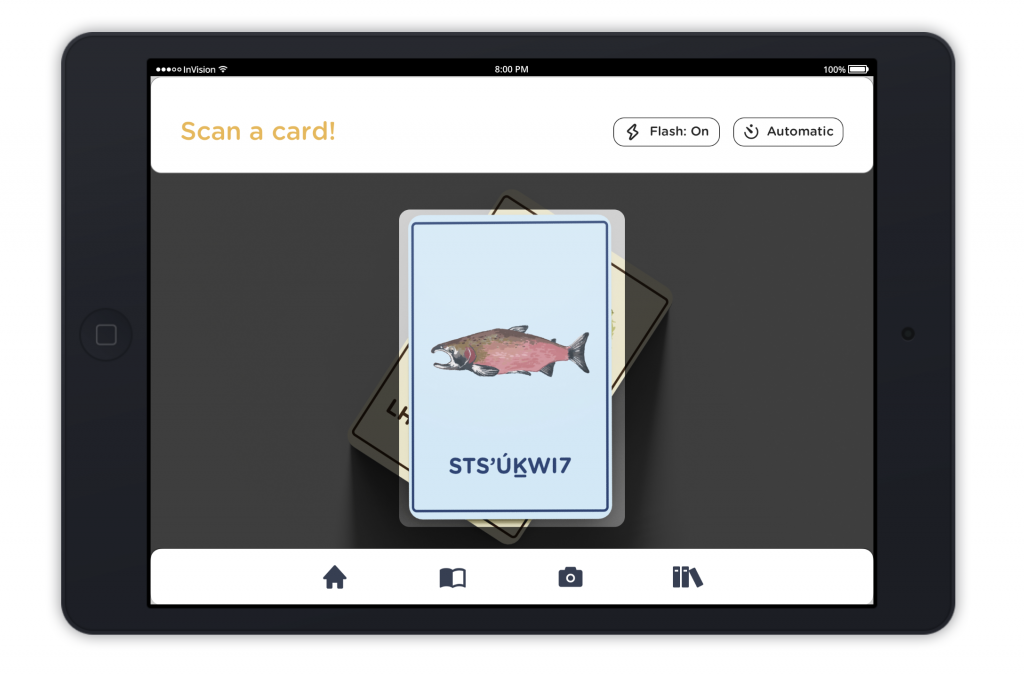The Beginning
In this project to teach/inform Canadians about an aspect of reconciliation, Alba, Tina, and I decided to tackle the topic of language revitalization. Since Indigenous languages are not well known especially in young children, we wanted to introduce an Indigenous language to school children through an interactive format. The design piece we created were cards, a board game, and an app to teach elementary school children, both Indigenous or non-Indigenous, about Squamish vocabulary.
In the beginning, we were pretty set on making an interactive card game that would have an English version and an Indigenous language version that children could pair together and play a game similar to Memory. However, we realized that while this game could be fun for children, it would not be enough as there needed to be practice involved for people to learn.
We had the idea of applying the cards to a storybook and helping kids learn by having the vocabulary used in a narrative context, but due to our target audience between school children where they would use our design in a classroom setting, the storybook idea was dropped. 20-30 children listening to one story and trying to match cards to the pages as the story progressed is an unideal environment for learning.
After brainstorming, we decided on making a board game and an app where the cards could be further applied.
The Process
Earlier in our process period, we were able to speak to students from the Indigenous Independent Digital Filmmaking program (IIDF) and get their feedback on our ideas. At this point, we were still undecided on which Indigenous language we would be focussing on until the IIDF student we spoke to gave us the suggestion of using the Squamish language as Capilano University is on Squamish land.
As the one in charge of creating the app and its main purpose of furthering the card idea by providing a reference for pronunciation, I did research on the Squamish language itself. Through my research, I was able to find the Squamish-English Dictionary which was able to provide a very clear guide on how the Squamish language is spoken. I also did research on many language learning apps for kids in order to design the app as educational/professional and for children as possible.

One consideration that I based the app on was that it would be used in a classroom setting. Since many elementary schools are starting to incorporate technology into the classroom, tablets are often the most preferred device for kids.
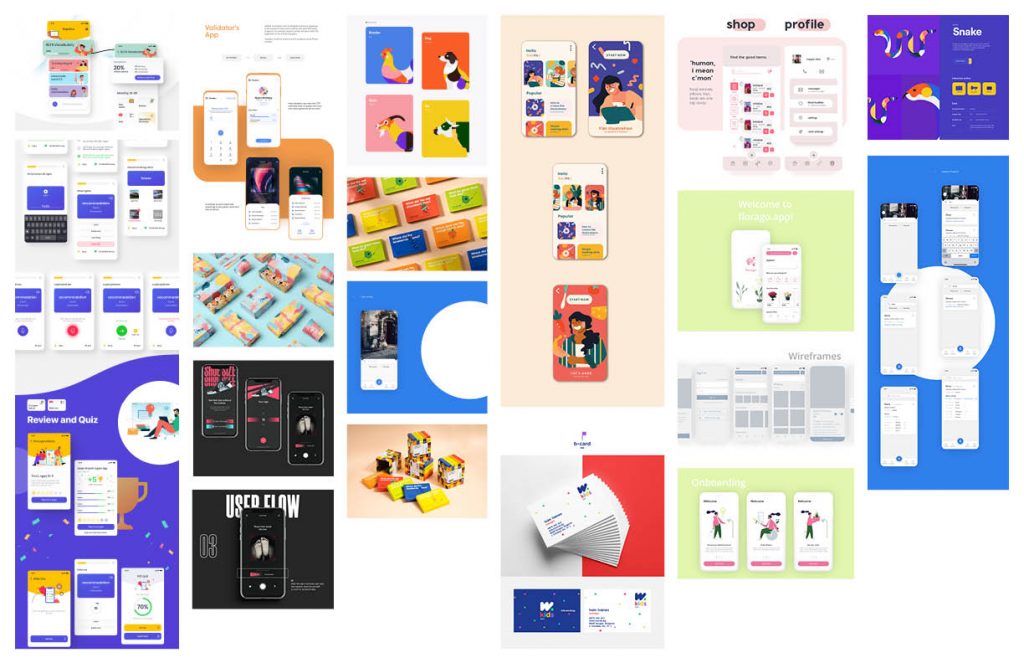
The Product
The app has two main functions: a place where kids could look up vocabulary and learn more about the word and how it relates to Squamish people, and the ability to scan a card and be able to view the card’s vocabulary directly.
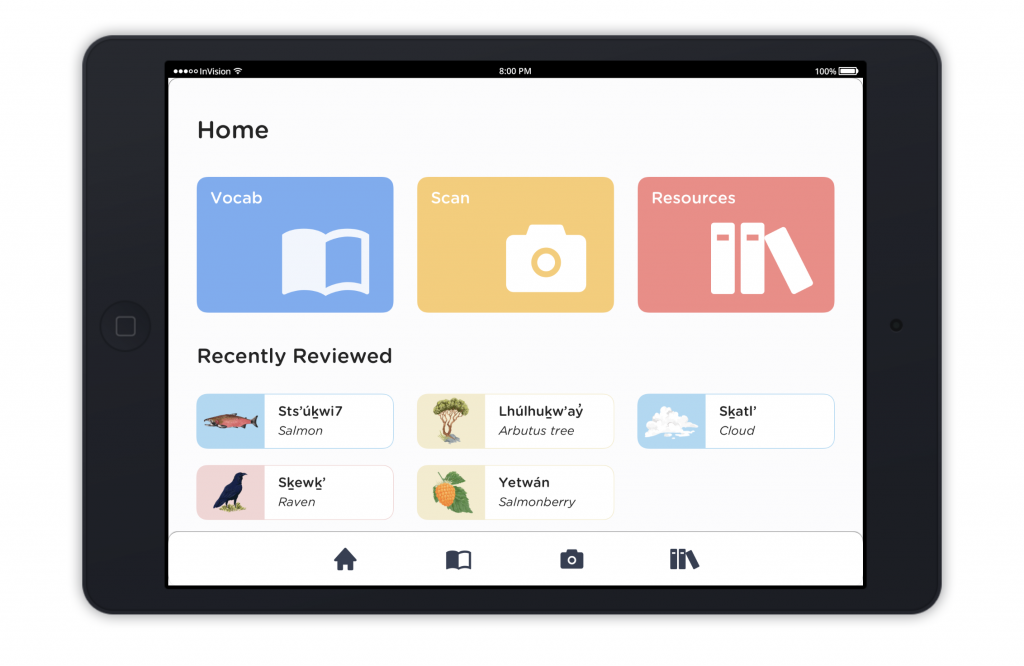
In the “Vocab” section, users would be able to search for a word, look through the dictionary, or look up words based on their category.

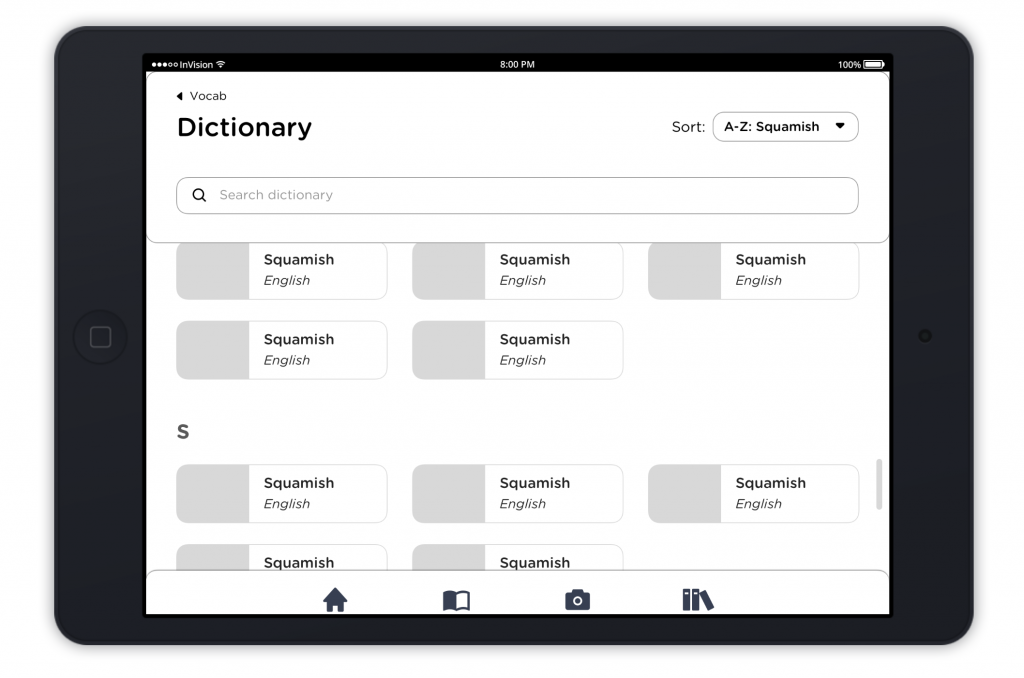
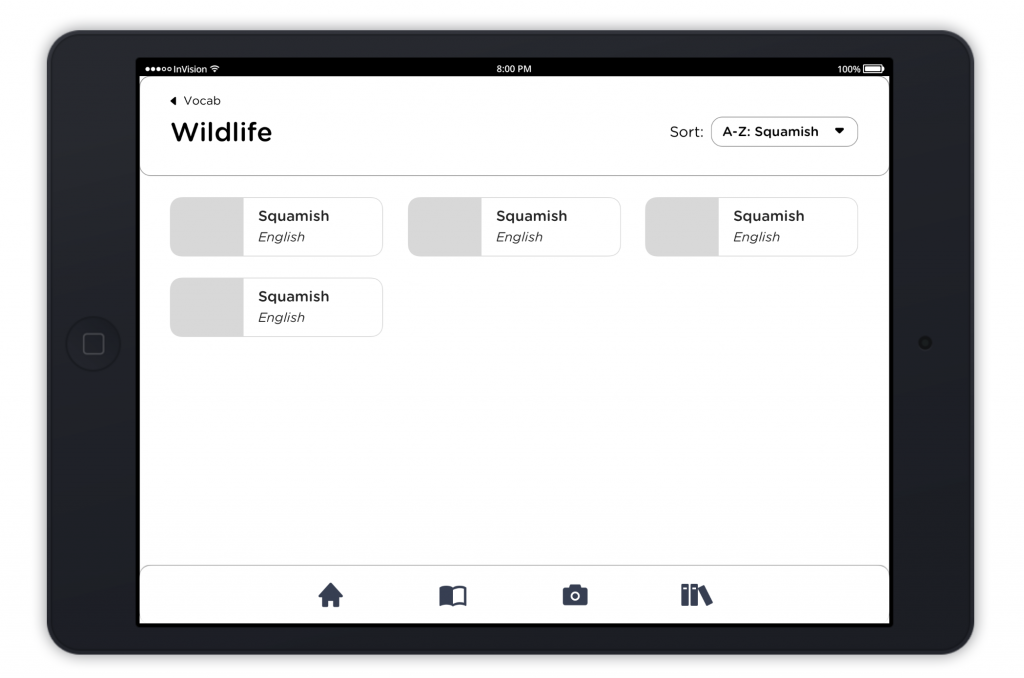
Users would be also able to scan the physical cards and view the illustration on a large screen as well as directly view the vocab’s information card. While our current design does not include this, I have also planned the illustration to be able to do a bit of motion graphics/animation that plays automatically when the card is scanned. Clicking on the illustration will bring the user to the vocab’s information card.
In the vocab’s information card, I’ve also decided to provide a general pronunciation guide that will help with hearing the actual word spoken that users can play with the “speaker” icon. The “play” icon will enable the motion graphic/animation to play that users can typically enjoy when they scan a card.
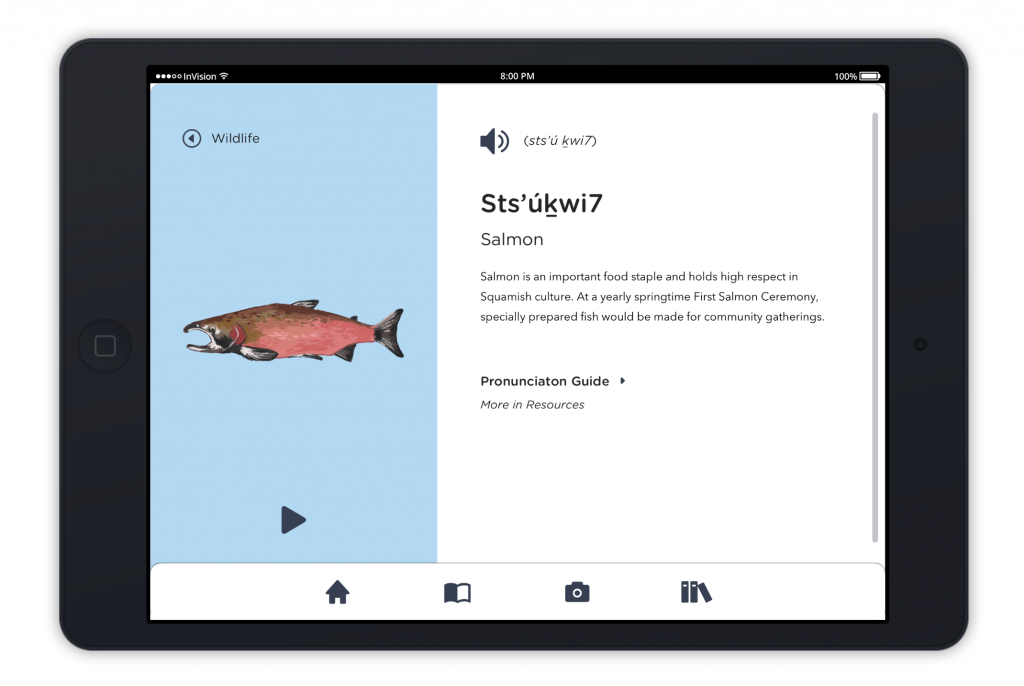

Invision Link: https://projects.invisionapp.com/share/48W43WR5GFK#/screens/406339493
Overall, I feel that we did a good job with this project. We were always thinking about the target market and the actual use of our idea. We considered how beneficial our design would be towards language revitalization and if we were being respectful in our illustrations and text.


